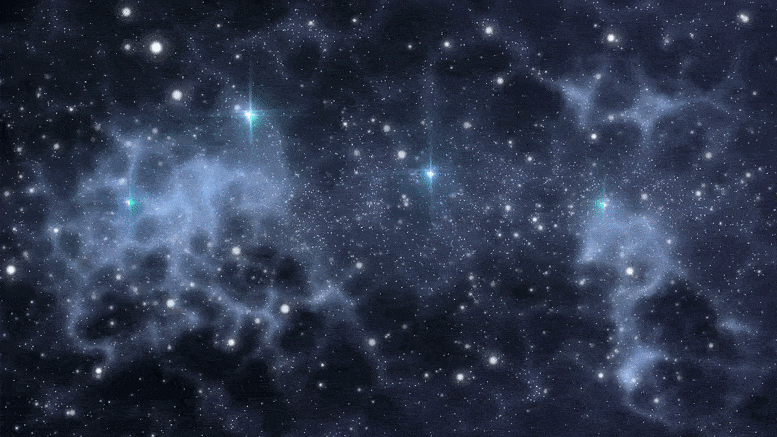
A team of researchers has now proposed a new candidate for dark matter: HYPER, or “HighlY Interactive ParticlE Relics.”
Phase transition in early universe changes strength of interaction between dark and normal matter.
Dark matter remains one of the greatest mysteries of modern physics. It is clear that it must exist, because without dark matter, for example, the motion of galaxies cannot be explained. But it has never been possible to detect dark matter in an experiment.
Currently, there are many proposals for new experiments: They aim to detect dark matter directly via its scattering from the constituents of the atomic nuclei of a detection medium, i.e., protons and neutrons.
A team of researchers—Robert McGehee and Aaron Pierce of the University of Michigan and Gilly Elor of Johannes Gutenberg University of Mainz in Germany—has now proposed a new candidate for dark matter: HYPER, or “HighlY Interactive ParticlE Relics.”
In the HYPER model, sometime after the formation of dark matter in the early universe, the strength of its interaction with normal matter increases abruptly—which on the one hand, makes it potentially detectable today and at the same time can explain the abundance of dark matter.
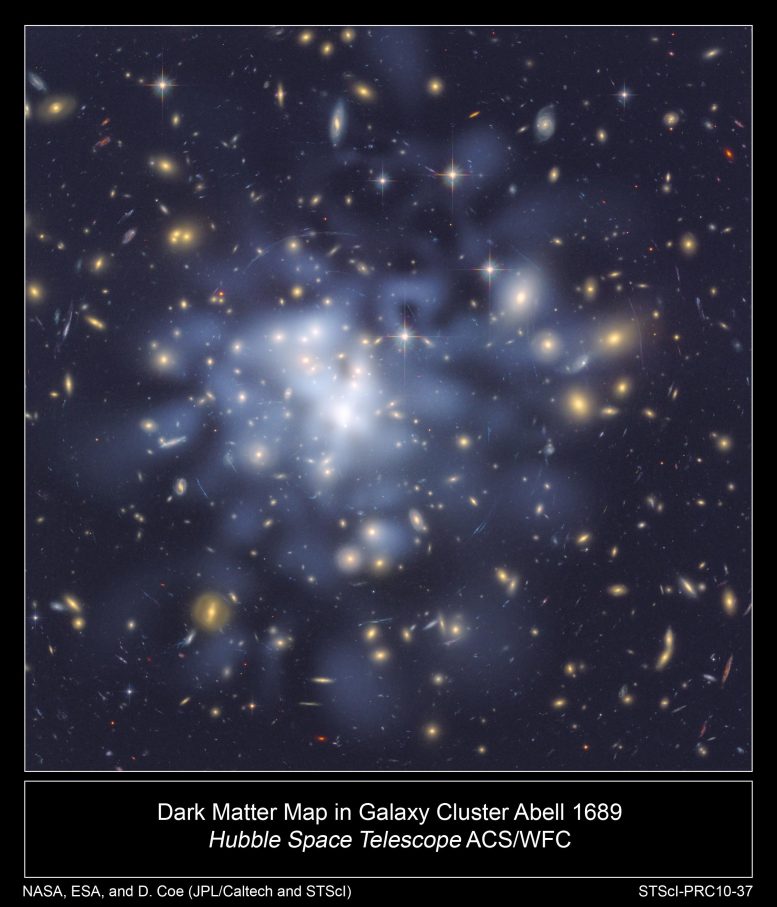
This NASA Hubble Space Telescope image shows the distribution of dark matter in the center of the giant galaxy cluster Abell 1689, containing about 1,000 galaxies and trillions of stars.
Dark matter is an invisible form of matter that accounts for most of the universe’s mass. Hubble cannot see the dark matter directly. Astronomers inferred its location by analyzing the effect of gravitational lensing, where light from galaxies behind Abell 1689 is distorted by intervening matter within the cluster.
Researchers used the observed positions of 135 lensed images of 42 background galaxies to calculate the location and amount of dark matter in the cluster. They superimposed a map of these inferred dark matter concentrations, tinted blue, on an image of the cluster taken by Hubble’s Advanced Camera for Surveys. If the cluster’s gravity came only from the visible galaxies, the lensing distortions would be much weaker. The map reveals that the densest concentration of dark matter is in the cluster’s core.
Abell 1689 resides 2.2 billion light-years from Earth. The image was taken in June 2002.
Credit: NASA, ESA, D. Coe (NASA Jet Propulsion Laboratory/California Institute of Technology, and Space Telescope Science Institute), N. Benitez (Institute of Astrophysics of Andalusia, Spain), T. Broadhurst (University of the Basque Country, Spain), and H. Ford (Johns Hopkins University)
The new diversity in the dark matter sector
Since the search for heavy dark matter particles, or so-called WIMPS, has not yet led to success, the research community is looking for alternative dark matter particles, especially lighter ones. At the same time, one generically expects phase transitions in the dark sector—after all, there are several in the visible sector, the researchers say. But previous studies have tended to neglect them.
“There has not been a consistent dark matter model for the mass range that some planned experiments hope to access. “However, our HYPER model illustrates that a phase transition can actually help make the dark matter more easily detectable,” said Elor, a postdoctoral researcher in theoretical physics at JGU.
The challenge for a suitable model: If dark matter interacts too strongly with normal matter, its (precisely known) amount formed in the early universe would be too small, contradicting astrophysical observations. However, if it is produced in just the right amount, the interaction would conversely be too weak to detect dark matter in present-day experiments.
“Our central idea, which underlies the HYPER model, is that the interaction changes abruptly once—so we can have the best of both worlds: the right amount of dark matter and a large interaction so we might detect it,” McGehee said.
And this is how the researchers envision it: In particle physics, an interaction is usually mediated by a specific particle, a so-called mediator—and so is the interaction of dark matter with normal matter. Both the formation of dark matter and its detection function via this mediator, with the strength of the interaction depending on its mass: The larger the mass, the weaker the interaction.
The mediator must first be heavy enough so that the correct amount of dark matter is formed and later light enough so that dark matter is detectable at all. The solution: There was a phase transition after the formation of dark matter, during which the mass of the mediator suddenly decreased.
“Thus, on the one hand, the amount of dark matter is kept constant, and on the other hand, the interaction is boosted or strengthened in such a way that dark matter should be directly detectable,” Pierce said.
New model covers almost the full parameter range of planned experiments
“The HYPER model of dark matter is able to cover almost the entire range that the new experiments make accessible,” Elor said.
Specifically, the research team first considered the maximum cross-section of the mediator-mediated interaction with the protons and neutrons of an atomic nucleus to be consistent with astrological observations and certain particle-physics decays. The next step was to consider whether there was a model for dark matter that exhibited this interaction.
“And here we came up with the idea of the phase transition,” McGehee said. “We then calculated the amount of dark matter that exists in the universe and then simulated the phase transition using our calculations.”
There are a great many constraints to consider, such as a constant amount of dark matter.
“Here, we have to systematically consider and include very many scenarios, for example, asking the question whether it is really certain that our mediator does not suddenly lead to the formation of new dark matter, which of course must not be,” Elor said. “But in the end, we were convinced that our HYPER model works.”
The research is published in the journal Physical Review Letters.
Reference: “Maximizing Direct Detection with Highly Interactive Particle Relic Dark Matter” by Gilly Elor, Robert McGehee and Aaron Pierce, 20 January 2023, Physical Review Letters.
DOI: 10.1103/PhysRevLett.130.031803

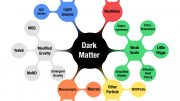
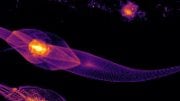
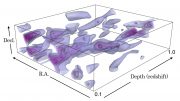
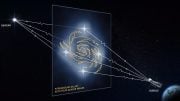
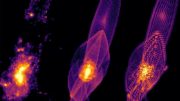

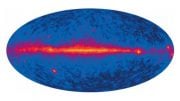

The origin of the asymmetry of matter and antimatter is one of the most challenging problems in particle physics and cosmology. According to the topological vortex field theory,the interaction and balance between topological vortex fields, covering all long-distance and short-range contributions of space-time motion, and is the basis for the formation and evolution of cosmic matter. In the formation and evolution of cosmic matter, matter and antimatter are mainly shown between the topological vortex and its identical twin anti-vortex, not between the high-dimensional space-time matters formed by their interaction. The material hierarchy and its interaction ways are vital for understanding matter and antimatter. It is believed with the improvement of theoretical level and the progress of science and technology, the understanding for matter and antimatter will usher a vast frontiers in physics. If you are interested, you can browse https://zhuanlan.zhihu.com/p/463666584.
The nature of topological vortex is gravitational field. Gravitation is the beginning of all things, and is the most raw power for maintaining and connecting the world. If there is no physical environment with dark matter and dark energy topological vortex gravitational fields, there can be neither all kinds of celestial bodies and microscopic particles nor the interaction of them.
As the early universe cooled the gaseous dark matter all condensed at about the same time forming the cosmic web. Once stars and black holes had formed they began vaporizing the liquid dark matter. Over time the ratio of Gaseous Dark Matter to Liquid Dark Matter has been increasing..
Another intriguing model of Dark Matter (and Dark Energy) can be found here:
https://www.researchgate.net/project/Dark-matter-dark-energy-and-cosmic-inflation
I’d probably consider reading the study, but the unique idea of cold-matter-focusable gravity flows carried by Planck-scaled vacuum energy dipoles constrained to carry a galaxy-scaled dipole-roll is an idea that lacks the bent-universe religious baggage of general relativity.
For sure the village general relativity worshipping troll MoND eyewear fanatic should be along shortly to administer appropriate corrective lensing action on this page.
If we imagine non-Planck gravity having a Planck counterpart, we could see how the primordial neutronium state (albeit without the chromodynamic component), it is clear how the coalescence of Planck scale gravitonic monopoles would impart quarks with color. This would lead to a rapid decomposition of the primordial neutronium, with the newly acquired quark chromodynamics creating spatio-baryonic resonance, creating normal matter, and dark matter (which in this case, are quasi-baryonic chromo-gravitonic vortices which were unable to form stable chromodynamic properties to become true baryons). This refutes your hypothesis of vacuum energy dipoles, which in my opinion is the last refuge of physics-ignorant, low-self-esteem keyboard theorists with Einstein-envy.
– Created by Chat GPT using your post and others, and asking it to create an absurd rebuttal as written by a pompous @sshole with Dunning-Kruger complex, but with very little knowledge of astrophysics. Please feel free to use these ideas in your next posts.
“Created by Chat GPT”
Oh look, it’s a religious zombie using robots to save the children!
Yet another model for Dark Matter, eh?
Another possibility, from a view of String Theory, is that Dark Matter appears to us as an effect of string/anti-string annihilations. As you may know, quantum mechanics requires that strings must be formed as pairs in the quantum foam – a string and an anti-string – that immediately annihilate each other. Quantum mechanics also requires both the string and anti-string to be surrounded by “jitters” that reduce their monstrous vibrating energies. What if this jitter remains for a fraction of an instant after their string/anti-string annihilations? This temporary jitter would be seen by us as matter, via E=mc2, for that instant before it too returns to the foam. That’s why we never see it – the “mass” lasts only for that instant but is repeated over and over and over, all over. Specifics on this can be found by searching YouTube for “Dark Matter – A String Theory Way”
Don’t dwell on String Theory any more. You can try to understand the interaction of topological vortices. Topological vortex is a natural gravitational field. Mass, inertia and various forms of energy are the result of the interaction of topological vortices. In fact, each topological vortex is the unity of opposites of left rotation and right rotation, which is not only for the observers, that is the same in the interaction of vortices. There is no eternal mass, only eternal fluid mechanics.
Don’t forget that topological vortex is also just an idea, barely a theory, with little to back it up. I’ve found that when looking at various phenomena such as Dark Matter, Dark Energy, creating our universe, inflation, etc., views of String Theory give good answers. I’m not asking anyone to believe in it, but don’t tell me not to.
From the cosmic space accretion disk to the quantum spin, what had to back it up. What gives the vortex the power of endless rotation. Why does contemporary physics turn a blind eye to vortex and pursue the so-called string instead. Why give up the natural gravitational field of vortex and look for the source of gravity everywhere. Symmetries are power. For centuries, symmetries have allowed physicists to find underlying connections and fundamental relationships throughout the universe. You are great because you are good at thinking.
If we imagine a 7 dimensional universe, where time is the 7th dimension, and dimensions 4,5,6 are the inverse of spatial dimensions 1,2,3, we can easily see that string theory is not needed. The hypermetric resonance effects of the spatial dimensions while being stretched in the temporal dimension give the illusion of dark matter,as highly resonant spatial dimensions will stretch more than the non-resonant areas. The CMB is simply a resonance map. Areas with high expansion, of course, diluted matter, hindering star formation, creating the dark voids, while the non-resonant edges retained the original concentration of matter. It is clear that this is the simplest explanation.
– Created by Chat GPT using your post and a few other nonsense posts as input, and asking it to create an equally nonsensical rebuttal, refined through quillbot
You seem to be quite proficient at nonsense. I prefer to stick to solid ideas based on facts.
“It is clear that it must exist, because without dark matter, for example, the motion of galaxies cannot be explained”.
Sure it can. There’s something wrong with your physics model or even more likely the distance/size measurements as a result of a mistaken belief that all red-shift is distance related instead of the result of particles in space between here and there (something not believed to be true when it was assumed to be accurate 100% of the time).
Just the mere fact that this article says “We know it MUST be true because it doesn’t fit our model” is ASININE BEYOND BELIEF. Maybe your model is WRONG?? The arrogance and ego of today’s scientists have reached almost religious proportions. The Webb telescope has shown the Big Bang never happened, but scientists won’t believe it because it destroys the world they “believe in” and many of their careers based on it become meaningless. Unfortunately, wishing something to be right or wrong doesn’t make it so.
It’s time scientists behave professionally and go where the evidence lies instead of making up mathematical FUDGES to explain why their model ISN’T WRONG JUST MISSING SOMETHING UNKNOWN. Ridiculous. Make up your ‘dark’ matter. Make up your own energy (dark energy which is negated if there was no Big Bang and therefore no need for it). Make up your own particles and hope something turns up at CERNS that looks like what you described and declare victory despite absolutely no proven benefit to knowing this and unbelievable amounts of money wasted looking for it. That’s not science. It’s science fiction! Star Trek would be proud.
Created a new sock puppet, but spewing the same nonsense? Dude, take your meds and get a life.
The voices in your head are taking you for a ride.
… till it is explained to the bottom level… if there is a bottom level!
With Dark Matter/ Dark Energy the experiments being explained HighLY interactive particle interaction has promise of detection of the Dark caricature, makes me think the realm of the Darks is they mask themselves so close to relative matter to distinguish between matter and the Darks some type of difference will show them materialize, something added to the value of the Darks could show detection.